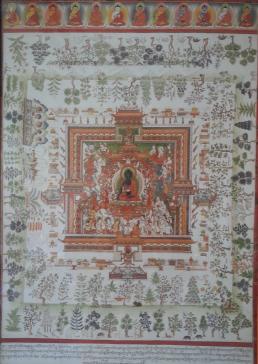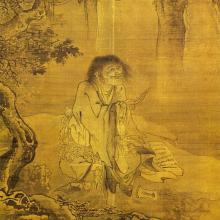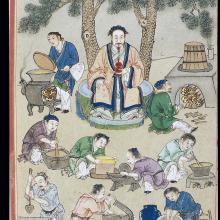Writing between the years of 492 and 498, the medieval Daoist patriarch and court alchemist Tao Hongjing 陶弘景 (456–536) described the multitiered drug market of his day as a complex drug supply chain between those who prescribe, those who procure, and those who sell them on the market: “The various doctors look, but do not recognize the drugs, they listen exclusively to the sellers in the marketplace. The sellers also do not differentiate or evaluate them [thoroughly], they always commission those who pick and deliver the drugs. The pickers and suppliers transmit and practice benighted methods, so that the true and false, the good and bad are not distinguished.” [1]
Tao’s portrayal draws out the complex exchanges between people whose different positions and skill sets required quite different material practices, producing different understandings of what a drug “is”—a cure for a disease, a living plant, a dried plant, a commodity for trade. This picture is further complicated by the fact that, oftentimes, drugs originated in places quite far from the sites where they were used or prescribed. Writing 150 years later than Tao, from the vantage point of the Tang capital in Chang’an, Kong Zhiyue 孔志約 had this to say about the impact of place and circulation on drugs: “When plants and animals leave their original grounds, then the material will remain the same but their efficacy will change.” [2]
This project brings to the forefront the relationships between spatiality, community and efficacy, and investigates how drugs traveled and were differently construed across diverse communities in medieval China. By reading across multiple genres of drug writing in medical, Daoist, and Buddhist sources, it demonstrates how drugs were newly constituted in different communities, and how knowledge of drugs situated those actors and communities in relation to one another.
The project makes new strides conceptually and technologically, by developing digital tools which will enable us to track the situated nature of drug lore—within communities, within textual genealogies and within time and space. The initial pilot study will analyse Buddhist, Daoist, and medical corpuses of the Six Dynasties period (220–589 CE), the formative period for China’s major medical and religious traditions. We will use digitized texts from high-quality open-source archives, and are currently investigating resources such as CBETA (mirrored here) and the Kanseki Repository. Initially, we will generate statistics which describe the distributions of Chinese and foreign drug terms in different texts. We will include metadata about these texts’ sectarian, geographic, and chronological origins (from general bibliographic studies), from which we will make general remarks about the periodization and regional features of drug lore: who was producing it, where, and when. Based on these results, we will select texts for closer study and subject them to more refined analyses of their dating and attributions.
Then, using an automated text-marking platform such as MARKUS, we will mark up these texts for drug names, properties, geographic locations, and significant individuals. Drugs have many variant names, which can be conditional on regional or sectarian naming practices, so we will organize the variant drug names in a digital tool that will enable us to track who uses which terms and when, what functions they had, and which diseases they treated. This will enable us to ask many kinds of question, such as: Which drugs most commonly appear together and in what kind of text? To what extent did Daoists and Buddhists use the same or different drugs, and how do these compare to the pharmacopoeic literature? Which were the most popular drugs, and in which time period, region, or genre?
Drugs are also closely associated with regions in which they are produced or grown, or the market towns through which they were traded. Using GIS name-authority databases (CHGIS, CCTS and DDBC), we will automatically identify location names from the texts using MARKUS. Then we will associate those names with GIS identities. From these, we will be able to produce mapped displays of the distribution of our data in terms of time, space, text genres, community, and sectarian affiliations. Did Buddhists and Daoists from similar time period and region compete regarding their knowledge of drugs? Do similar term sets appear in texts from specific regions? To what extent are drug properties, or the diseases they treat, commonly ascribed to drugs from the same region? Do the locations where Daoists or Buddhists took or prescribed drugs coincide with those regions foregrounded in the pharmacopoeic literature?
This pilot is developed with a larger goal in mind. It focuses on the Six Dynasties in China, a profoundly formative period for China’s major religions and for the medical disciplines. We hope in later stages of the project to collaborate with other researchers to make this platform usable for studying texts in multiple languages. By aggregating the data from multiple textual corpuses, together we might begin to visualize the movements and receptions of drugs around the world.
[1] 眾醫睹不識藥,唯聽 市人,市人又不辨究,皆委采送之家。采送之家,傳習治拙1,真偽好惡莫測。 –Tao Hongjing, Preface to the Annotated and Collated Materia Medica, Bencao jing jizhu 本草經集注 ,序. Ca 492-498 CE.
[2] 動植…離其本土,則質同而效異。 –Kong Zhiyue孔志約, Preface to the Newly Revised Pharmacopoeia, Xinxiu bencao xu 新修本草序, 659 CE



